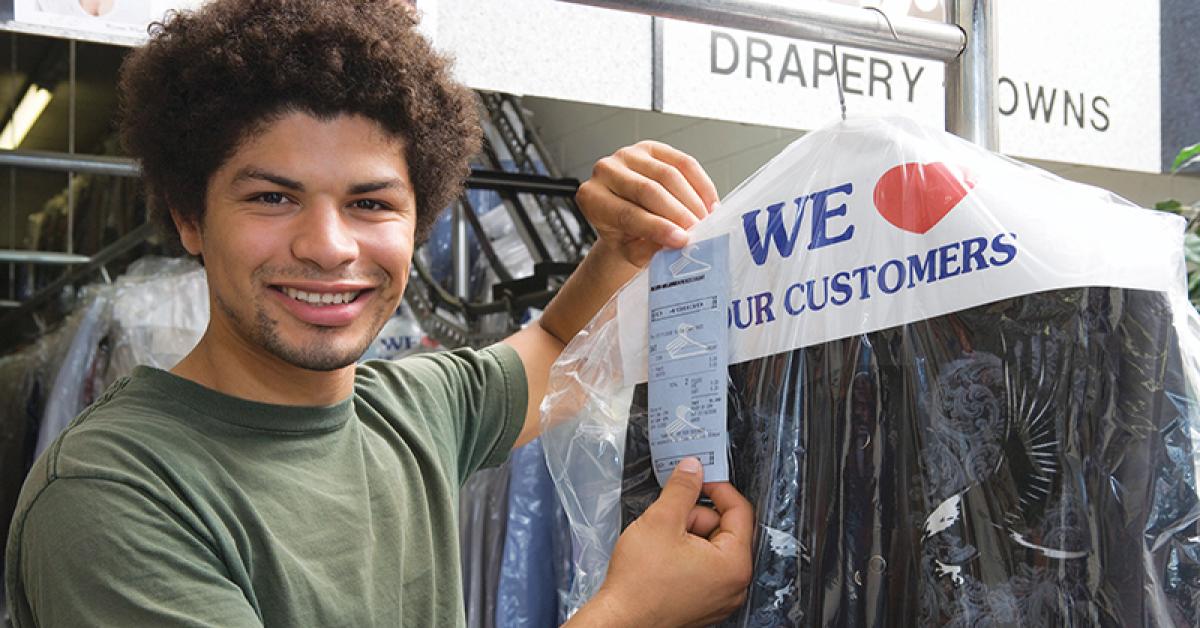CHICAGO — While dry cleaning requires a lot of equipment and know-how, leaders who respect their greatest asset — their team — can build a business that will not only survive but thrive for the long term. They recognize that attracting the right people and keeping them loyal to the business can provide a winning situation for everyone involved.
In Part 1 of this series, we looked at the importance of celebrating wins and ways to reward workers. In Part 2, we dove into the actions that make permanent, positive changes in your company when it comes to keeping your best team members. Today, we’ll conclude by examining ways that your company can stand out when it comes to building a better work atmosphere.
The Positive Power of Peers
One of the things that separates a pleasant work environment from one that employees dread is the relationships they form there. If they are coming to work with friends, there’s a much better chance of them staying and enjoying their time on the job.
“Most people are at work more than they are during waking hours at home, so the work environment matters,” says Dr. Alex Ellis, a transformational speaker and trainer who specializes in workplace culture. “If I’m going to be spending all this time here, I don’t want to begrudge having to be here. I want this to be an environment that I’m excited about being a part of. It’s very important that there is a good culture on the job, and co-workers bonding with each other creates that type of an environment.”
Managers who recognize they can play a role in this team-building have an advantage over those who don’t, but it requires effort, says David Grippi, chief operating officer at Clean Brands, a garment-care franchise that represents, among other brands, Lapels Cleaners and Martinizing Cleaners.
“That’s probably one of the bigger struggles, when you’re trying to build a team, or bring in new people to an existing team,” he says. “You’re trying to find that clique, where they work well together without a lot of drama behind the scenes.”
Giving your staff a target to aim for will help foster those relationships, Grippi believes.
“A key to building that team is to have common goals,” he says. “What are the expectations we are looking to have at the end of the week or the end of the month, and how do we get there as a team? If everyone works together to achieve those results, that helps the team bond.”
Ellis believes that leaders can also institute activities that promote team-building.
“That might be a monthly lunch, where we eat together, talk and build relationships,” he says. “Let’s go to Top Golf. Let’s go bowling. Let’s do a company barbecue.”
There are also ways to build camaraderie while helping the community.
“You can foster relationships by identifying a community service project,” Ellis says, “so that we, as a team, can do something that builds teamwork outside of the job. Maybe we’ll go to Habitat for Humanity and help paint a house, or we help at a soup kitchen.”
No matter the activity, Ellis says investing time in one another helps to form workplace bonds: “We’re even more productive together as a team when we go back to work. People can be team-building without even realizing that the goal was team-building.”
Recognize Those Who Make a Difference
There are team members who bring out the best in others, and there are employees who poison an atmosphere with a constant barrage of negativity. One of management’s key functions is to encourage positivity.
It’s best to “catch” people doing something right, Grippi believes.
“Recognizing someone doing a great job right away really sets the stage,” he says. “If you hear a great interaction between a team member and a client, call it out right away after the client leaves and let them know they did a great job. Use it as a coachable moment. Bring the team up and talk about this interaction — what transpired and how this was handled. Tell them that Joe did a great job with the way he handled this customer.”
“No matter what it is in life, what gets rewarded gets repeated,” Ellis agrees. “When we realize what negativity does to the climate of our companies, it should incentivize us to celebrate when a person does have a positive attitude, because attitude is contagious and has an impact on co-workers. It also has an impact on the customers who come through the door. When you have a person who has a bubbly, warm, engaging personality, it has an impact.”
While attributes like productivity should certainly be rewarded, Ellis believes attitude recognition is also important for the health of the workplace.
“Let’s look at who has a good attitude,” he says. “Who’s pleasant to be around? Who makes this a happy place to come to every day? Let’s look at John. I love working with John. When he’s on my shift, I know we’re going to have a great day. The day is going to fly by because we always have a good time working together.”
More than a Workplace
Both Ellis and Grippi believe that, if leadership can provide the support necessary to make the team members feel like more than interchangeable cogs, those efforts go a long way in making their business a place where people will stay.
“Workers sometimes spend more time at work than they do at home,” Grippi says. “So, it is really their second home. And if it feels like home and not just a job, when they want to go to work, that changes the mindset for not only that employee, but it trickles down to team morale, team-building, hitting the goals, and more.”
“It goes a long way with staff,” Ellis adds, “that you’re concerned about them and they’re not just a hired hand here to produce for you, but that they are a human you respect and value.”
For Part 1 of this series, click HERE. For Part 2, click HERE.
Have a question or comment? E-mail our editor Dave Davis at [email protected].

















































































